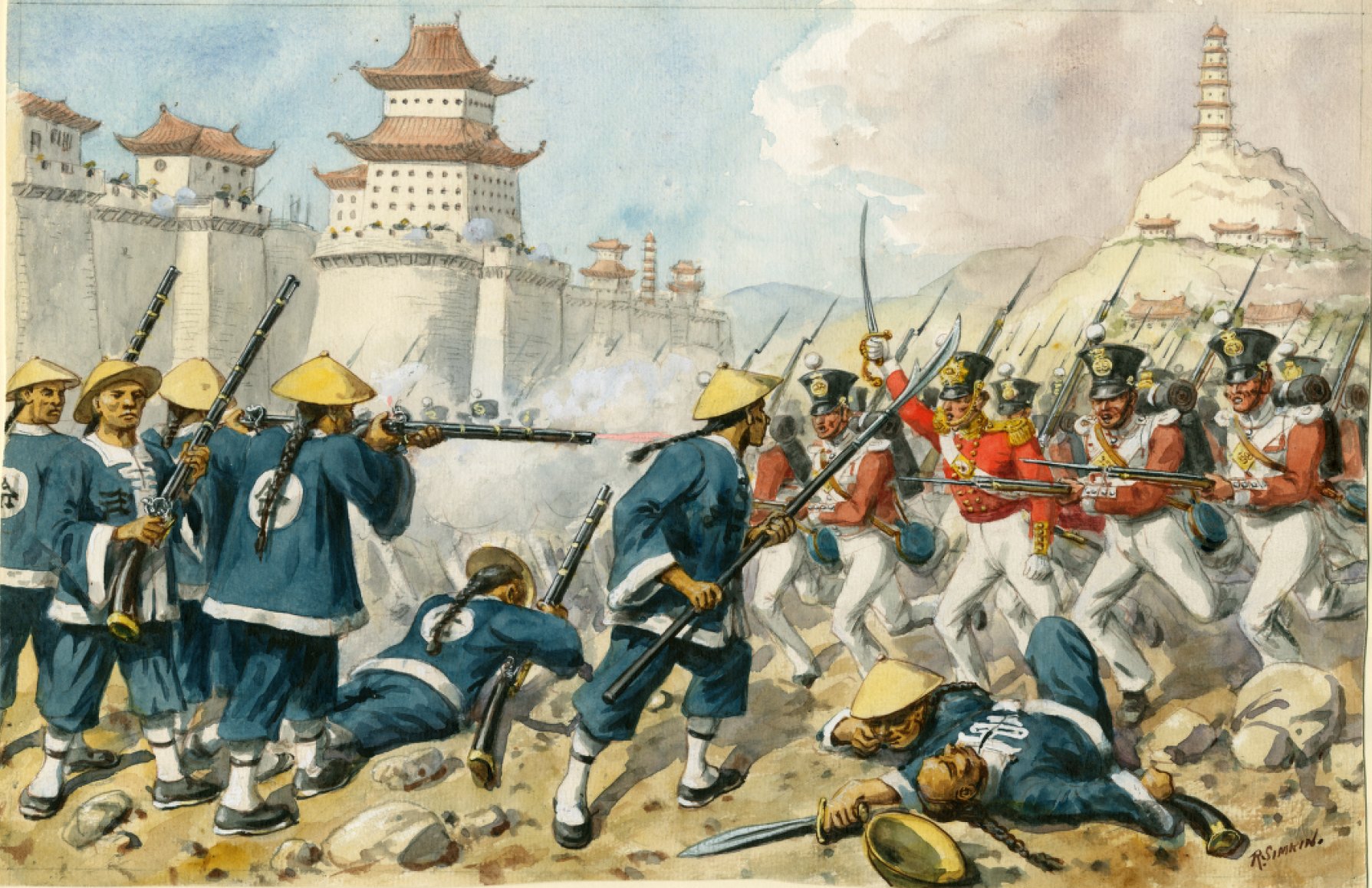|
Carl Theodore Liebermann
Carl Theodor Liebermann (23 February 1842 – 28 December 1914) was a German chemist and student of Adolf von Baeyer. Life Liebermann first studied at the University of Heidelberg where Robert Wilhelm Bunsen was teaching. He then joined the group of Adolf von Baeyer at the University of Berlin where he received his PhD in 1865. Together with Carl Gräbe, Liebermann synthesised the orange-red dye alizarin in 1868. After his habilitation in 1870 he became professor at the University of Berlin after Adolf von Baeyer left for the University of Strasbourg The University of Strasbourg (, Unistra) is a public research university located in Strasbourg, France, with over 52,000 students and 3,300 researchers. Founded in the 16th century by Johannes Sturm, it was a center of intellectual life during .... Shortly after Liebermann retired, in 1914, he died. Work In 1826, the French chemist Pierre Jean Robiquet had isolated from the root of a plant, madder, and defined the ... [...More Info...] [...Related Items...] OR: [Wikipedia] [Google] [Baidu] |
Berlin
Berlin ( ; ) is the Capital of Germany, capital and largest city of Germany, by both area and List of cities in Germany by population, population. With 3.7 million inhabitants, it has the List of cities in the European Union by population within city limits, highest population within its city limits of any city in the European Union. The city is also one of the states of Germany, being the List of German states by area, third smallest state in the country by area. Berlin is surrounded by the state of Brandenburg, and Brandenburg's capital Potsdam is nearby. The urban area of Berlin has a population of over 4.6 million and is therefore the most populous urban area in Germany. The Berlin/Brandenburg Metropolitan Region, Berlin-Brandenburg capital region has around 6.2 million inhabitants and is Germany's second-largest metropolitan region after the Rhine-Ruhr region, as well as the List of EU metropolitan areas by GDP, fifth-biggest metropolitan region by GDP in the European Union. ... [...More Info...] [...Related Items...] OR: [Wikipedia] [Google] [Baidu] |
Pierre Jean Robiquet
Pierre Jean Robiquet (; 13 January 1780 – 29 April 1840) was a French chemist. He laid founding work in identifying amino acids, the fundamental building blocks of proteins. He did this through recognizing the first of them, asparagine, in 1806, while working as an assistant for Louis Nicolas Vauquelin. He likewise laid founding work in the industry's adoption of industrial dyes, with the identification of alizarin in 1826, and in the emergence of modern medications, through the identification of codeine in 1832, an opiate alkaloid substance of widespread use with analgesic and antidiarrheal properties. Robiquet was born in Rennes. He was at first a pharmacist in the French armies during the French Revolution years, and became a professor at the École de pharmacie in Paris, where he died. Notable scientific achievements were among other things his isolation and characterization of properties of asparagine (the first amino acid to be identified, from asparagus, achieved. In ... [...More Info...] [...Related Items...] OR: [Wikipedia] [Google] [Baidu] |
Jewish Chemists
Jews (, , ), or the Jewish people, are an ethnoreligious group and nation, originating from the Israelites of ancient Israel and Judah. They also traditionally adhere to Judaism. Jewish ethnicity, religion, and community are highly interrelated, as Judaism is their ethnic religion, though it is not practiced by all ethnic Jews. Despite this, religious Jews regard converts to Judaism as members of the Jewish nation, pursuant to the long-standing conversion process. The Israelites emerged from the pre-existing Canaanite peoples to establish Israel and Judah in the Southern Levant during the Iron Age. John Day (2005), ''In Search of Pre-Exilic Israel'', Bloomsbury Publishing, pp. 47.5 8'In this sense, the emergence of ancient Israel is viewed not as the cause of the demise of Canaanite culture but as its upshot'. Originally, Jews referred to the inhabitants of the kingdom of JudahCf. Marcus Jastrow's ''Dictionary of the Targumim, Talmud Babli, Talmud Yerushalmi and Mid ... [...More Info...] [...Related Items...] OR: [Wikipedia] [Google] [Baidu] |
19th-century German Jews
The 19th century began on 1 January 1801 (represented by the Roman numerals MDCCCI), and ended on 31 December 1900 (MCM). It was the 9th century of the 2nd millennium. It was characterized by vast social upheaval. Slavery was Abolitionism, abolished in much of Europe and the Americas. The First Industrial Revolution, though it began in the late 18th century, expanded beyond its British homeland for the first time during the 19th century, particularly remaking the economies and societies of the Low Countries, France, the Rhineland, Northern Italy, and the Northeastern United States. A few decades later, the Second Industrial Revolution led to ever more massive urbanization and much higher levels of productivity, profit, and prosperity, a pattern that continued into the 20th century. The Catholic Church, in response to the growing influence and power of modernism, secularism and materialism, formed the First Vatican Council in the late 19th century to deal with such problems an ... [...More Info...] [...Related Items...] OR: [Wikipedia] [Google] [Baidu] |
1914 Deaths
This year saw the beginning of what became known as the First World War, after Archduke Franz Ferdinand of Austria, heir to the Austrian throne was Assassination of Archduke Franz Ferdinand, assassinated by Serbian nationalist Gavrilo Princip. It also saw the first airline to provide scheduled regular commercial passenger services with heavier-than-air aircraft, with the St. Petersburg–Tampa Airboat Line. Events January * January 1 – The St. Petersburg–Tampa Airboat Line in the United States starts services between St. Petersburg, Florida, St. Petersburg and Tampa, Florida, becoming the first airline to provide scheduled regular commercial passenger services with heavier-than-air aircraft, with Tony Jannus (the first federally-licensed pilot) conveying passengers in a Benoist XIV flying boat. Abram C. Pheil, mayor of St. Petersburg, is the first airline passenger, and over 3,000 people witness the first departure. * January 11 **The Sakurajima volcano in Japan ... [...More Info...] [...Related Items...] OR: [Wikipedia] [Google] [Baidu] |
1842 Births
Events January–March * January 6–January 13, 13 – First Anglo-Afghan War – Massacre of Elphinstone's army (Battle of Gandamak): British East India Company troops are destroyed by Afghan forces on the road from Kabul to Jalalabad, Afghanistan, by Wazir Akbar Khan, Akbar Khan, son of Dost Mohammad Khan (Emir of Afghanistan), Dost Mohammad Khan. * January 8 – Delft University of Technology is established by William II of the Netherlands, as a 'Royal Academy for the education of civilian engineers'. * January 23 – Antarctic explorer James Clark Ross, charting the eastern side of James Ross Island, reaches a Farthest South of 78°09'30"S. * January ** Michael Alexander (bishop), Michael Alexander takes office, as the first appointee to the Anglican-German Bishopric in Jerusalem. ** United States, American medical student William E. Clarke of Berkshire Medical College becomes the first person to administer an inhaled anesthetic, to facilitate a surgical procedure. ... [...More Info...] [...Related Items...] OR: [Wikipedia] [Google] [Baidu] |
William Henry Perkin
Sir William Henry Perkin (12 March 1838 – 14 July 1907) was a British chemist and entrepreneur best known for his serendipitous discovery of the first commercial synthetic organic dye, mauveine, made from aniline. Though he failed in trying to synthesise quinine for the treatment of malaria, he became successful in the field of dyes after his first discovery at the age of 18. Perkin set up a factory to produce the dye industrially. Lee Blaszczyk, professor of business history at the University of Leeds, states, "By laying the foundation for the synthetic organic chemicals industry, Perkin helped to revolutionize the world of fashion." Early years William Perkin was born in the East End of London, the youngest of the seven children of George Perkin, a successful carpenter. His mother, Sarah, was of Scottish descent and moved to East London as a child.UXL Encyclopedia of World Biography (2003). Accessed 18 March 2008. He was baptized in the Anglican parish church of St ... [...More Info...] [...Related Items...] OR: [Wikipedia] [Google] [Baidu] |
Anthracene
Anthracene is a solid polycyclic aromatic hydrocarbon (PAH) of formula C14H10, consisting of three fused benzene rings. It is a component of coal tar. Anthracene is used in the production of the red dye alizarin and other dyes, as a scintillator to detect high energy particles, as production of pharmaceutical drugs. Anthracene is colorless but exhibits a blue (400–500 nm peak) fluorescence under ultraviolet radiation. History and etymology Crude anthracene (with a melting point of only 180°) was discovered in 1832 by Jean-Baptiste Dumas and Auguste Laurent who crystalized it from a fraction of coal tar later known as "anthracene oil". Since their (inaccurate) measurements showed the proportions of carbon and hydrogen of it to be the same as in naphthalene, Laurent called it ''paranaphtaline'' in his 1835 publication of the discovery, which is translated to English as paranaphthalene. Two years later, however, he decided to rename the compound to its modern name d ... [...More Info...] [...Related Items...] OR: [Wikipedia] [Google] [Baidu] |
Madder
''Rubia'' is the type genus of the Rubiaceae family of flowering plants, which also contains ''Coffea'' (coffee). It contains around 80 species of perennial scrambling or climbing herbs and subshrubs native to the Old World. The genus and its best-known species are commonly known as madder, e.g. ''Rubia tinctorum'' (common madder), '' Rubia peregrina'' (wild madder), and '' Rubia cordifolia'' (Indian madder). Uses ''Rubia'' was an economically important source of a red pigment in many regions of Asia, Europe and Africa. The genus name ''Rubia'' derives from the Latin ' meaning "red". The plant's roots contain an anthracene compound called alizarin that gives its red colour to a textile dye known as Rose madder. It was also used as a colourant, especially for paint, that is referred to as Madder lake. The synthesis of alizarin greatly reduced demand for the natural compound. In Georgia and Armenia, Rubia is used for dying Easter eggs red. History Several species, such as ... [...More Info...] [...Related Items...] OR: [Wikipedia] [Google] [Baidu] |





